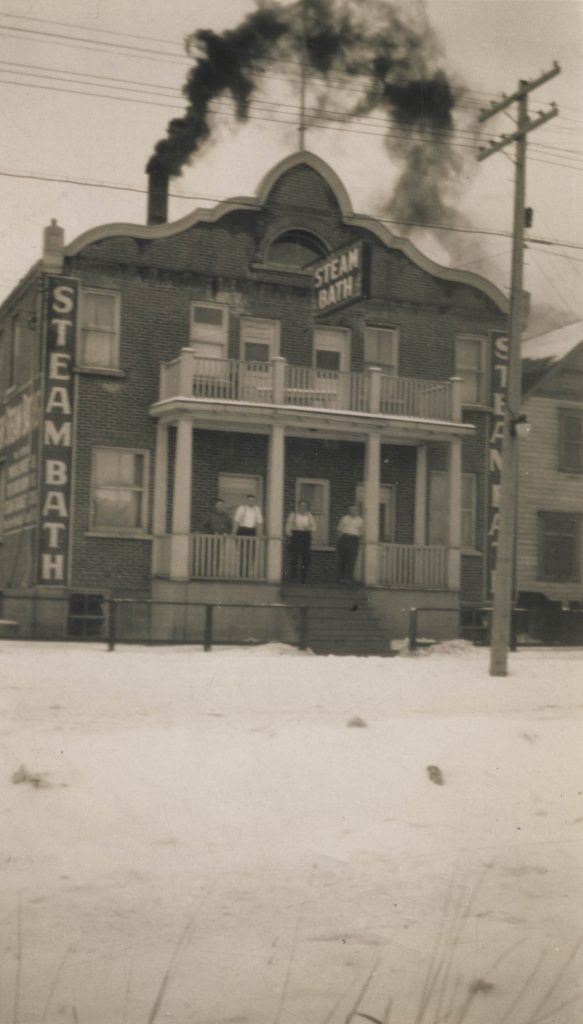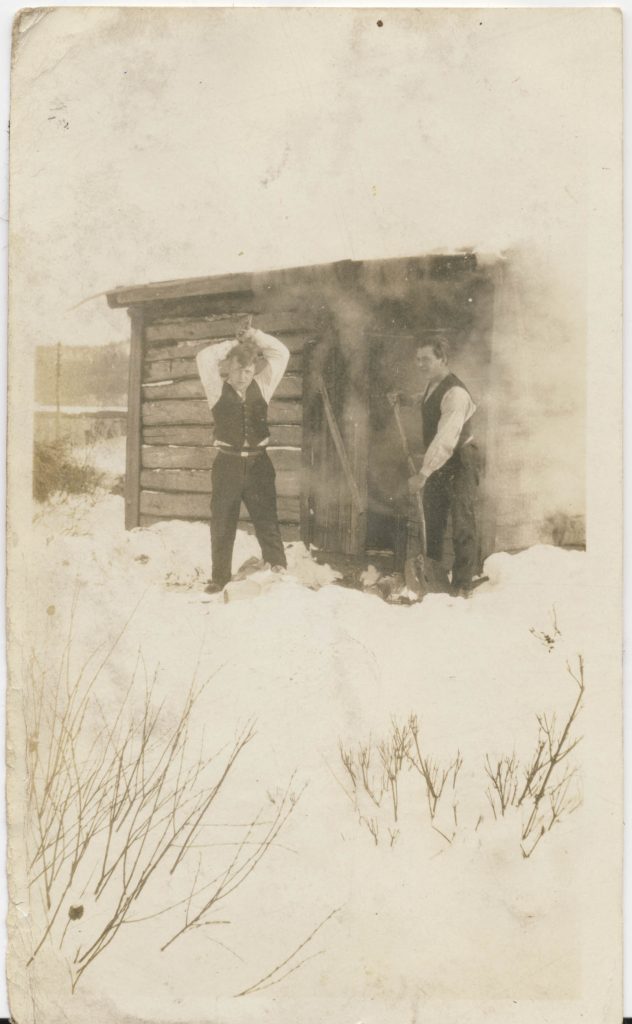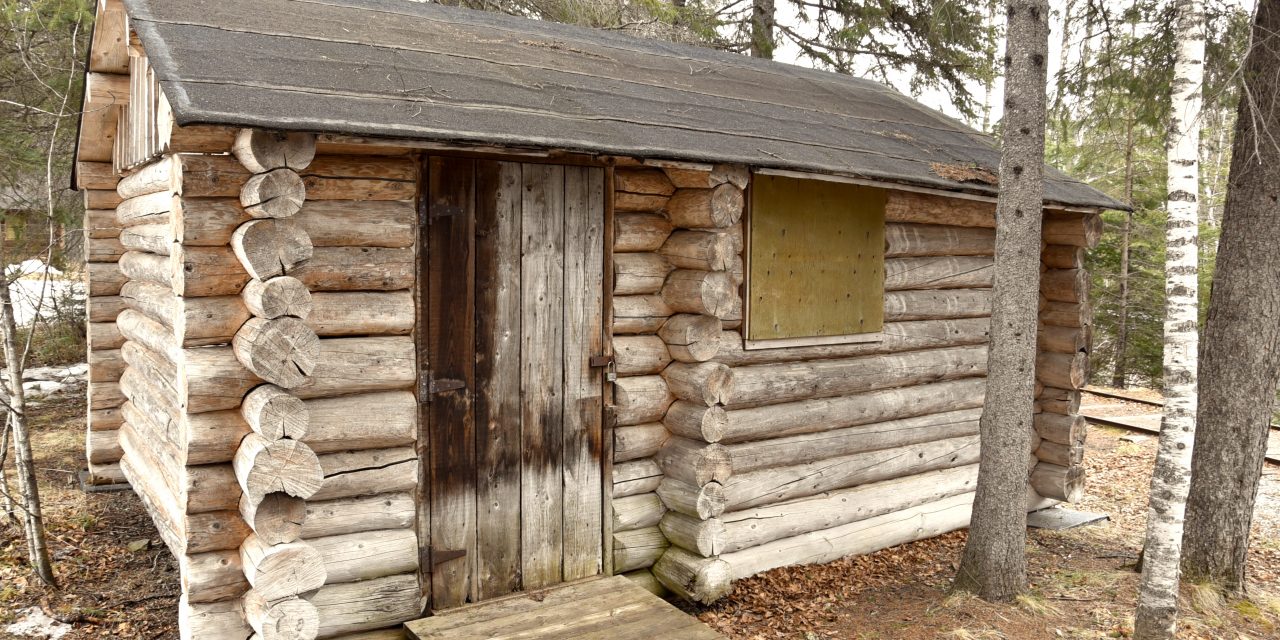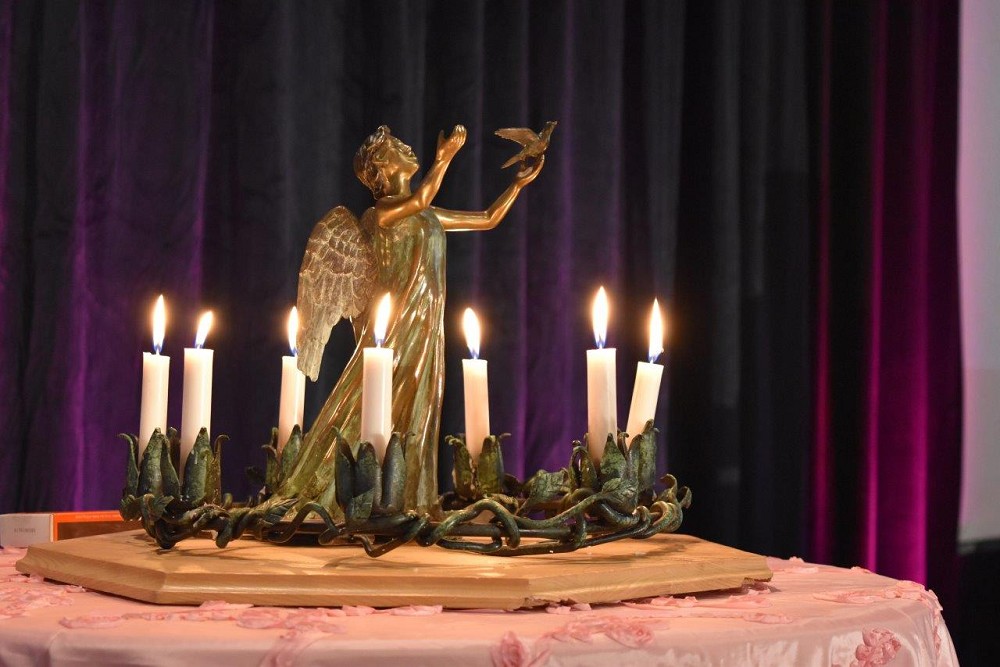In Praise of Sauna Traditions
By Betty Carpick
For such seemingly reticent people, Finlanders are known for their relaxed approach to communal nudity in close-knit, dimly lit, steamy quarters. The location, construction, and basic elements of the sauna alongside freshwater forest lakes are considered with nuanced detail. The classic two-room sauna layout was essential for the activities of daily life, particularly for early immigrants. As a fragrant sanctuary for hygiene, detoxification, social ritual, and restoration of the mind, body, and spirit, the sauna provides equanimity with a sensory potency that dissolves barriers.
In all seasons and during all times of day, rocks are heated in a spruce or cedar wood-fired stove reaching temperatures of upwards of 80°C. Throwing water on the hot stones creates vapours known as löyly, which conduct heat directly to the skin and open up the pores. A plunge into a lake or snow provides a counterpoint to the intensity of the heat and the relaxation of the meditative sweat.

Algoma Steam Bath, formerly on Algoma Street, Port Arthur
Credit: Photo courtesy of the Thunder Bay Finnish Canadian Historical Society Collection. Lakehead University Archives
During the Middle Ages, saunas were common all over Europe. With the proliferation of syphilis in the 1500s, sauna culture sizzled out. Finland was the exception. Saunas were an integral part of the way of life, representing a place to acknowledge life cycle milestones—birth, marriage, and death. A place to heal ailments, diseases, and broken hearts. A retreat for corporeal and spiritual cleansing. Purification and healing traditions tied to ancient sauna rituals and practices passed on from generation to generation to exemplify Finnish character.
At the end of the 19th century, when hundreds of Finlanders begin to arrive in resource-rich Northwestern Ontario to work in bush camps, the longing for home and familiarity would have been intense. Women and men lived in rooming houses without private bathing facilities and, for the Finns, the accustomed form of a thorough clean—the sauna. Public bathing was not only a necessity but a way to socialize. Near the Finnish quarter on Bay Street, the Algoma Steam Bath provided a balm after the rigours of work and homesteading. A vestige of the city’s public saunas and a popular destination for residents and visitors, Kangas Sauna, founded in 1967, features 18 private saunas and a restaurant. Designed by Kalevi Kangas, son of the original Finnish owner, the building provides a modern day version of the Nordic experience.

Two men clearing path to sauna
Credit: Photo courtesy of the Thunder Bay Finnish Canadian Historical Society Collection. Lakehead University Archives
Today, the enthusiasm of the rituals of saunas in Thunder Bay is emblematic of camp life. While still a place to bask in the heat and reflect in solitude, the contemporary practice of sauna has an unhurried social ambiance that’s part of the pattern of escaping from the city. Basic rules such as no eating or drinking in the sauna and not discussing certain subjects have relaxed. There may not be vihta (birch bath brooms) to stimulate a bather’s skin or sauna lenkki (sauna sausage), and kalja (homemade beer) to enjoy in the dressing room or porch, but while sauna experiences may vary, the primality of the elements of water, air, fire, and earth in the sauna gives everyone of all ages moments to rejoice.















